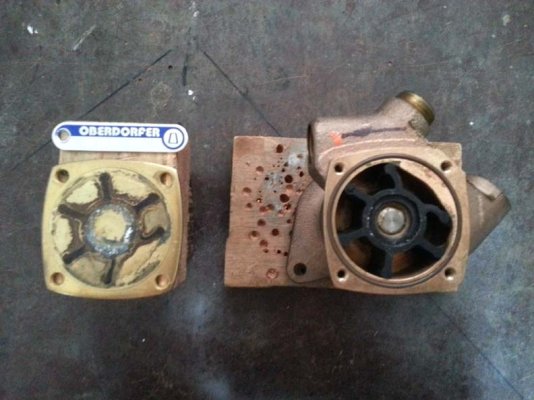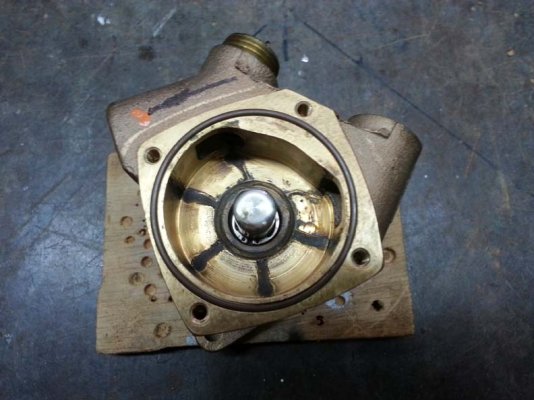Captain K
Senior Member
- Joined
- Mar 19, 2012
- Messages
- 315
- Location
- USA
- Vessel Name
- GITANA
- Vessel Make
- Sea Ranger 47 Pilothouse
Thought I'd pass along a hard-learned lesson to my fellow Ford Lehman 120 operators: Last week, as a precaution, I replaced the 3-years in service raw water impellers in both my engines. I used impellers from stores of spares that were on the boat when I bought it 4 years ago. The spares looked identical to the old impellers and had a like new appearance. Despite that, the replacement impellers failed in less than 10 hours running time. The starboard one shed all its blades, causing a brief engine overheat with attendant alarms...just as I was exiting a narrow pass out to sea. The port impeller was nearly as bad. Upon removal I noticed the failed spares were stamped with Jabsco part 1210-0003. Consulting my manual, I found the suggested impeller is a 1210-0001. Luckily I'd purchased a pair of -0001's to replenish my spares store when I did the change out last week. I noticed when I put them in that the -0001 blades felt supple and pliant. The -0003 impeller blades were stiff and almost brittle by comparison. I've now put 7 hours on the -0001 impellers. So far so good! I've been boating for quite a few years and never realized that two impellers of identical dimensions and appearance could be so different.



